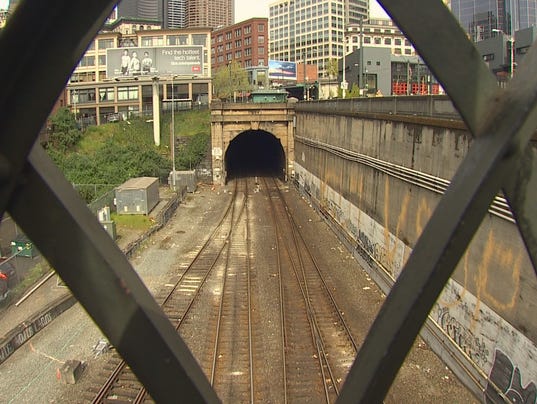Oil Trains Too Fast, New Safety Rules Too Slow
Forest Ethics 05/01/15
In
the first three months of 2015 four oil train accidents sent emergency
responders scrambling, crude oil spilling into drinking water supplies,
and fireballs blasting into the sky. The string of accidents in February
and March demonstrate the severe threat from Bakken crude and Alberta
tar sands moving on mile-long oil trains. These derailments and
explosions set a bar we can use to measure the new oil train standards
announced today by the US and Canadian governments.
Would the new rules have
prevented any of the 2015 accidents and, ultimately, will they reduce the
threat of oil train catastrophes like the 2013 Lac Megantic, Quebec, explosion
that killed 47 people? The answer is no, and the reason is speed: the regulations
move too slow and the trains continue to move too fast.
The
rules announced at a joint press conference today by US and Canadian
officials arrive decades late and with the sticky fingerprints of the
oil and rail industry all over them. The administration has slowed down
and narrowed the scope of the rules so the most dangerous tank cars stay
on the rails for at least two and a half years. Other unsafe tank cars
have five or seven years before they must meet new higher standards.
Not
that the new standards will help much: All four 2015 accidents involved
CPC-1232 cars, the newer tank cars that are supposedly safer than the
dangerous DOT-111s. But to be clear, neither the upgraded cars or new
cars built to the new standard will prevent an explosion if the train is
moving at normal speeds..... more here
AFPM Sues BNSF Over Tank Car Surcharge on Crude Oil by Rail Movements in Federal Court in Texas
JDSupra 05/03/15
The American Fuel and Petrochemical Manufacturers (AFPM) has filed a lawsuit against BNSF Railway over BNSF's $1,000 surcharge on each carload of crude oil that is shipped in an older model of rail car, known as "DOT-111's." AFPM's lawsuit is another development in the on-going controversy over how best to ensure the safety of crude-by-rail shipments....
...AFPM's lawsuit alleges that BNSF's surcharge on the use of these DOT-111's is in violation of the railroad's common carrier obligation, a statutory mandate that requires railroads to provide transportation on reasonable request. ...
... BNSF has not filed its answer to AFPM's lawsuit. In a statement on the company's website, BNSF characterized the surcharges as "rate discounts for crude shippers that load their product in rail cars with improved safety characteristics."... more here
Elgin firefighters prep for derailment 'doomsday'
Marni Pyke Daily Herald 05/04/15
"Here's what we're looking at for a doomsday," Elgin Assistant Fire Chief Dave Schmidt says.
He points to a screen shot of downtown Elgin with a circle showing a 1.5-mile radius.
Inside are 10,500 structures and
thousands of people that emergency workers would have to evacuate if a
railroad track warped by heat, a faulty train wheel or a defective tank
car caused hazardous materials to spill out into the environment.
What comes next? That's what Schmidt and a roomful of firefighters try to envision.... more here



